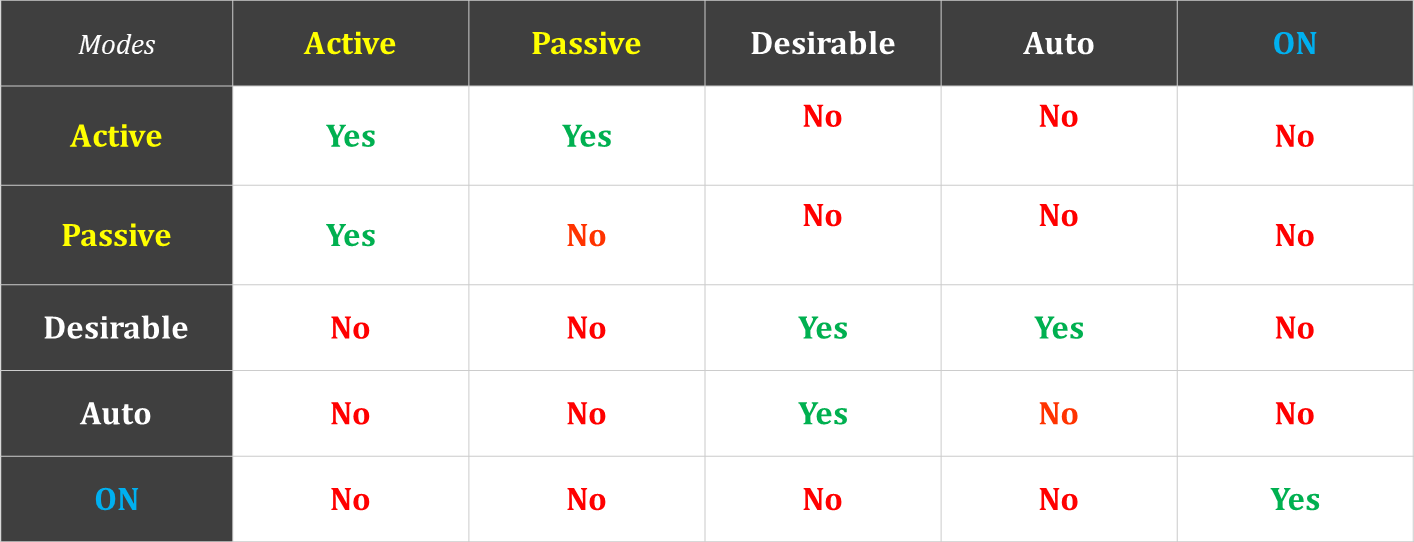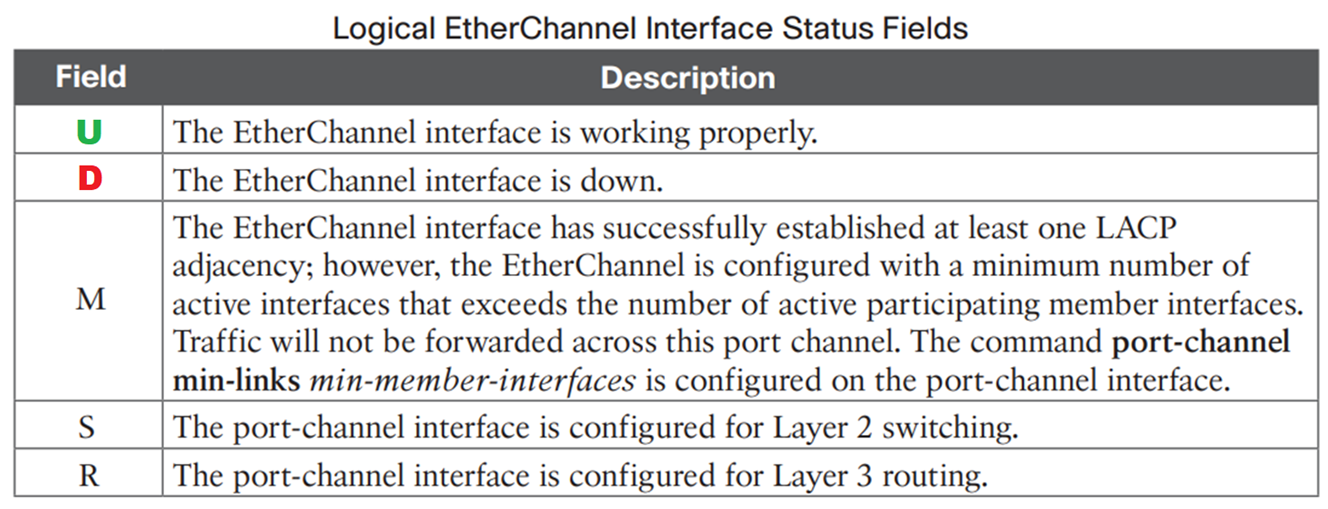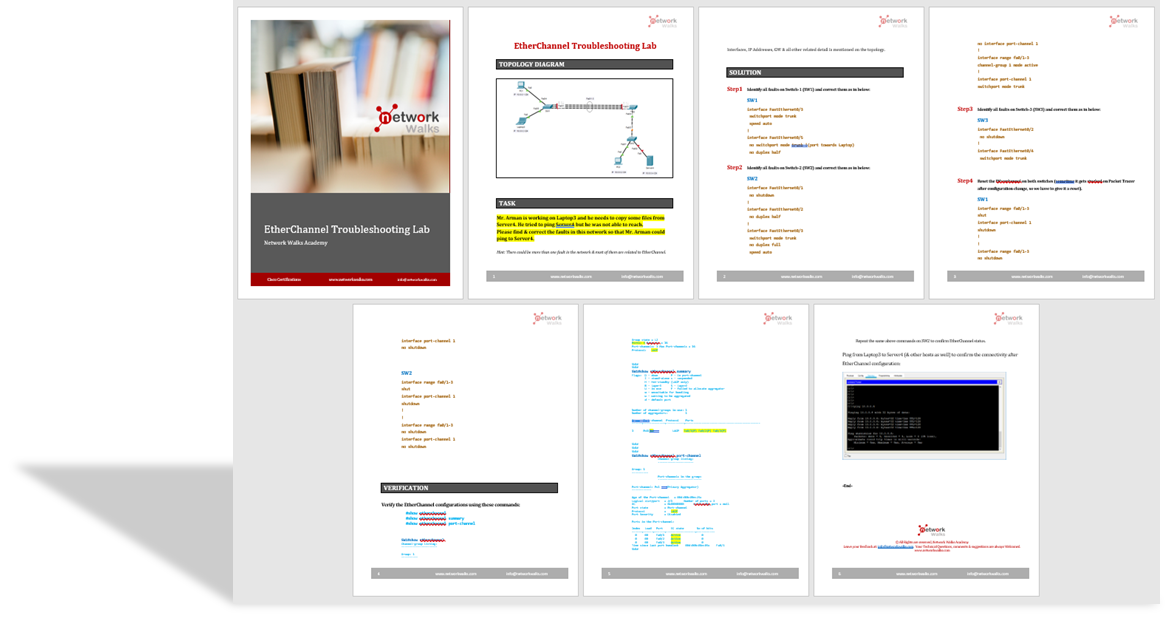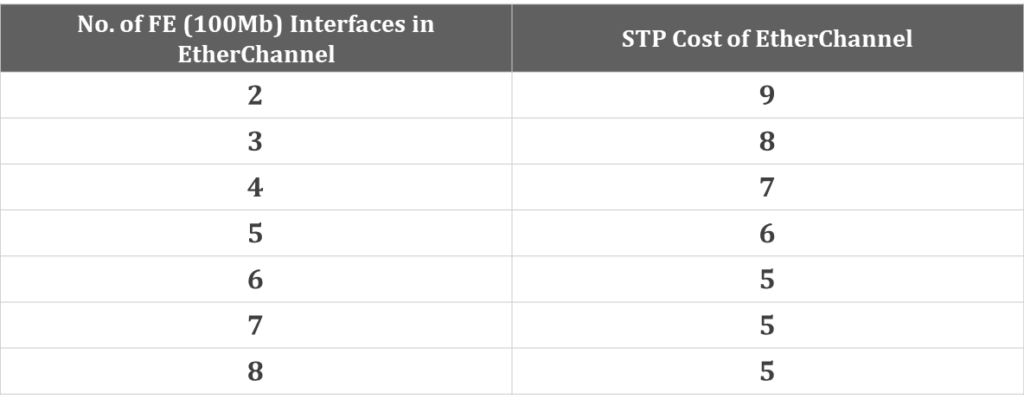
What is EtherChannel?
EtherChannel is a Layer-2 link aggregation protocol which is used to combine multiple physical links to a single logical link called an EtherChannel bundle or a PortChannel. It is a Cisco Proprietary and IEEE 802.3ad (2000) is a standard way of carrying out Link Aggregation. The purpose of EtherChannel is to achieve Link Aggregation or Logical Bundling. The no. of member ports are between 2 – 8 (a maximum of 8 active out of a total of 16 on most Cisco Switches). EtherChannel has a multicast address of
LACP:01-80-c2-00-00-02, PAgP:01-00-0C-CC-CC-CC
Why do we need EtherChannel in Computer Network?
EtherChannel’s main advantages are: Bandwidth bundling without Layer2 loops and Topology stability when a member link line protocol goes up/down

Criteria For EtherChannel in Computer Networks
To create an EtherChannel all ports should possess:
- Speed settings
- Duplex settings
- STP settings
- VLAN membership (for access ports)
- Native VLAN (for trunk ports)
- Allowed VLANs (for trunk ports)
- Trunking encapsulation protocol (for trunk ports)
Link Aggregation Protocols
There are three main ways of configuration of port-channels:
- Statically configuring it using the on keyword
- Dynamically configuring it to use LACP (open source) or PAgP (only on Cisco devices)
Both LACP and PAgP have similar goals but they are not interoperable with each other

PAgP (Cisco)
The Port Aggregation Protocol (PAgP) is a Cisco-proprietary protocol that can only be run on Cisco switches and on those switches licensed by Cisco to support PAgP:

EtherChannel Interoperability
Below are interoperability combinations & their results for static, LACP, and PAgP:

EtherChannel Configuration (Cisco) in Computer Network
Below are commands used for configuring Ether Channel in Cisco packet tracer lab:
SW1
SW1(config)# interface range fa0/1-2
SW1(config-if-range)# channel-group 1 mode active
!
SW1(config)# interface port-channel 1
SW1(config-if)# switchport mode trunk
SW2
SW2(config)# interface range fa0/1-2
SW2(config-if-range)# channel-group 2 mode active
!
SW2(config)# interface port-channel 2
SW2(config-if)# switchport mode trunk
SW1#show etherchannel
Channel-group listing:
----------------------
Group: 1
----------
Group state = L2
Ports: 2 Maxports = 16
Port-channels: 1 Max Port-channels = 16
Protocol: LACP
SW1#
SW1#show etherchannel summary
Flags: D - down P - in port-channel
I - stand-alone s - suspended
H - Hot-standby (LACP only)
R - Layer3 S - Layer2
U - in use f - failed to allocate aggregator
u - unsuitable for bundling
w - waiting to be aggregated
Number of channel-groups in use: 1
Number of aggregators: 1
Group Port-channel Protocol Ports
------+-------------+-----------+----------------------------------------------
1 Po1(SU) LACP Fa0/1(P) Fa0/2(P)
SW1#
SW1#show etherchannel port-channel
Channel-group listing:
---------------------
Group: 1
----------
Port-channels in the group:
---------------------------
Port-channel: Po1 (Primary Aggregator)
------------
Age of the Port-channel = 00d:00h:03m:21s
Logical slot/port = 2/1 Number of ports = 2
GC = 0x00000000 HotStandBy port = null
Port state = Port-channel
Protocol = LACP
Port Security = Disabled
Ports in the Port-channel:
Index Load Port EC state No of bits
------+------+------+------------------+-----------
0 00 Fa0/1 Active 0
0 00 Fa0/2 Active 0
Time since last port bundled: 00d:00h:01m:32s Fa0/2
SW1#
Logical EtherChannel Interface Status Fields
The Logical Ether-Channel Interface Status Fields include U, D, M, S, and R. Below is the table showing Logical EtherChannel Interface Status Fields:

EtherChannel Member Interface Status Fields
The following is a table showing EtherChannel Member Interface Status Fields which are P, H, and I:

EtherChannel Troubleshooting Lab
You can practice Ether-Channel Troubleshooting through our labs in Cisco packet tracer:

EtherChannel’s STP Cost
Below is the table showing Ether-Channel’s STP Cost:

EtherChannel Load Balancing
The following is the table showing EtherChannel Load Balancing:

Note: It is possible to have different load-balancing methods for different EtherChannels on one switch. If the load-balancing method is changed, it is applicable for all EtherChannel
To verify load-balancing options available on the device, use this command: (config)#port-channel load-balance ?
Default is
src-mac on cisco devices
EtherChannel Terms in Computer Network
Below are some additional parameters that can be used when configuring LACP:
- System ID: The switch uses the MAC address and the system priority to form the system ID
- System priority: Each switch running LACP must possess a system priority. The system priority can be specified automatically or through the CLI. The switch uses the MAC address and the system priority to form the system ID
- Port priority: All ports in the switch must have a port priority. The port priority can be specified automatically or through the CLI. The port priority and the port number form the port identifier. The switch uses the port priority to determine which ports to put on standby mode when a hardware limitation prevents all compatible ports from aggregating
-End-
You might also be interested in our free Online Quizzes on all IT topics including Cisco CCNA, Cyber Security, Python Programming, Linux & Ethical Hacking:
EtherChannel Quiz
EtherChannel Quiz (ENCOR, CCNP)
Free Online Quizzes (Best for Cisco CCNA, Huawei HCNA, N+)
You can also view free study notes (Cheat sheets) for long term memory:
Networkwalks Summary Cheatsheets










